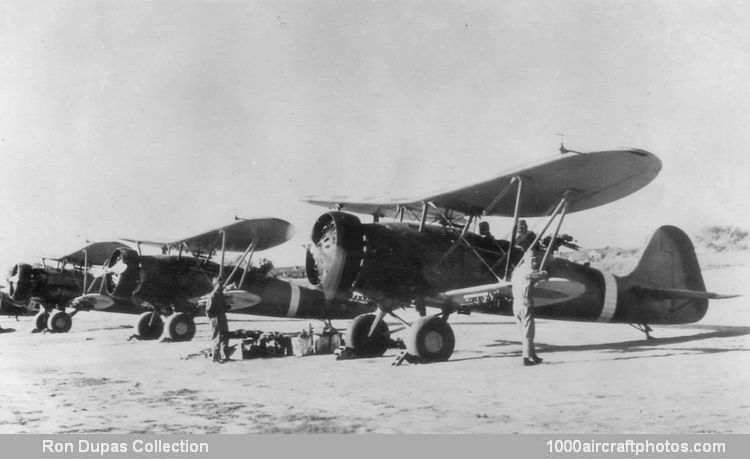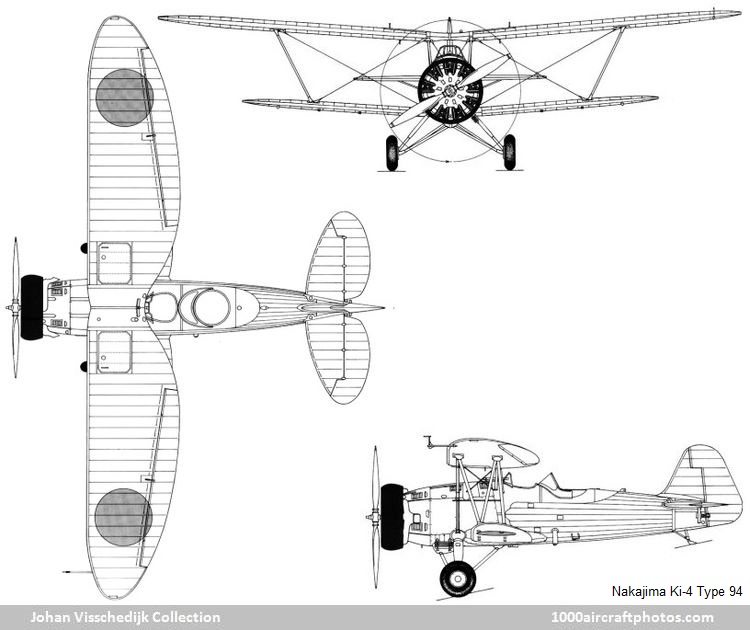05/31/2022. Remarks by Johan Visschedijk: "In 1933 the Imperial Japanese Army Air Force (IJAAF) contracted with Nakajima for a light-weight scout aircraft that would have maneuverability equal to that of a fighter in order to effectively fulfil the air-to-ground support role. To ensure that the design met its needs, the IJAAF, for the first time, participated in the development with a civil aircraft company. Taking part in the planning and supervision of the project was Nario Ando, an IJAAF engineer, with Nakajima's engineer Shigejiro Ohwada as the chief designer. The original plans for this aircraft envisaged it as a sesquiplane with elliptical planform wings for optimum maneuverability and with a Nakajima Kotobuki engine. The fuselage was to be an all-metal monocoque structure based on the successful use of this form in the Type 9l Fighter. The wood and metal wing structure was covered with fabric.
The development of the design was a long process involving many changes. The first three prototypes were completed in March, April and May 1934. The IJAAF remained closely involved with the project and flight evaluations were made by the Captains Saburo Amakasu and Yozo Fujita, along with Nakajima test pilot Kiyoshi Shinomiya. After flight tests it was determined that the fuselage should be lengthened, and so modified the aircraft had good maneuverability and stability. Fitted with two forward-firing fixed 0.303 in (7.7 mm) machine guns and one or two dorsal flexible 0.303 in (7.7 mm) machine guns, it was accepted by the IJAAF in July 1934 as the Army Type 94 Reconnaissance Aircraft, with the short designation of Ki-4, and put into production.
Throughout its production and service life, a number of changes were made. As the Type 94-Ko, or early production model, it could be fitted with wheel spats, depending on the anticipated landing field conditions to be encountered, and under-wing bomb racks were a later addition.
The Type 94-Otsu had an engine exhaust collector ring instead of individual stacks, and bomb racks beneath the wing became standard equipment. During production, low-pressure tires were adopted, but without spats. This model of the Ki-4 was manufactured primarily by Tachikawa Hikoki and Manshu Hikoki.
To meet a possible requirement for operations from rivers and lakes in mainland China, the sixth prototype was fitted with one main and two wingtip floats. It was tested at the Kasumigaura Naval Kokutai by the Army Air Technical Research Institute. One of the Type 94-Otsu models was fitted with twin floats but these two models were not accepted for service because of doubts about such a requirement.
Recognizing the need for flotation gear in the event of emergencies over water, a Type 94-Otsu was fitted with a pair of compressed-air inflatable flotation bags attached to the sides of the fuselage. This was the same equipment that was installed on the Nakajima Navy Type 90-2-2 Reconnaissance Seaplane and Type 90-2-3 Carrier Reconnaissance Aircraft, and the first of this type of flotation equipment to be tried on Army aircraft, but it did not become standard IJAAF equipment.
There was also the Type 94-T Multi-purpose Aircraft, which was a civil conversion with two seats in the rear position. This aircraft was to be used for general observation and geographical survey.
The Army Type 94-Ko and -Otsu aircraft were assigned to operational units from 1935 to 1937 respectively and were replacements for the Mitsubishi-built Type 92 Reconnaissance Aircraft. They were used in the close air support role at various locations on mainland China from the beginning to the middle stage of the Sino-Japanese Conflict. In addition to general aerial observation, they undertook various missions ranging from light bombing in support of ground operations to message dropping and pick-up using message containers for contact with troops in the field. Because of this hazardous duty, many were lost and, therefore, the service life for this type was relatively short. Because of this wide combat capability, they were one of the more popular aircrafts to be seen at Army airfields in the early part of the Sino-Japanese Conflict. They had a reputation for being one of the best types for easy maintenance.
The Ki-4 was the last biplane reconnaissance aircraft to be used by the IJAAF.

